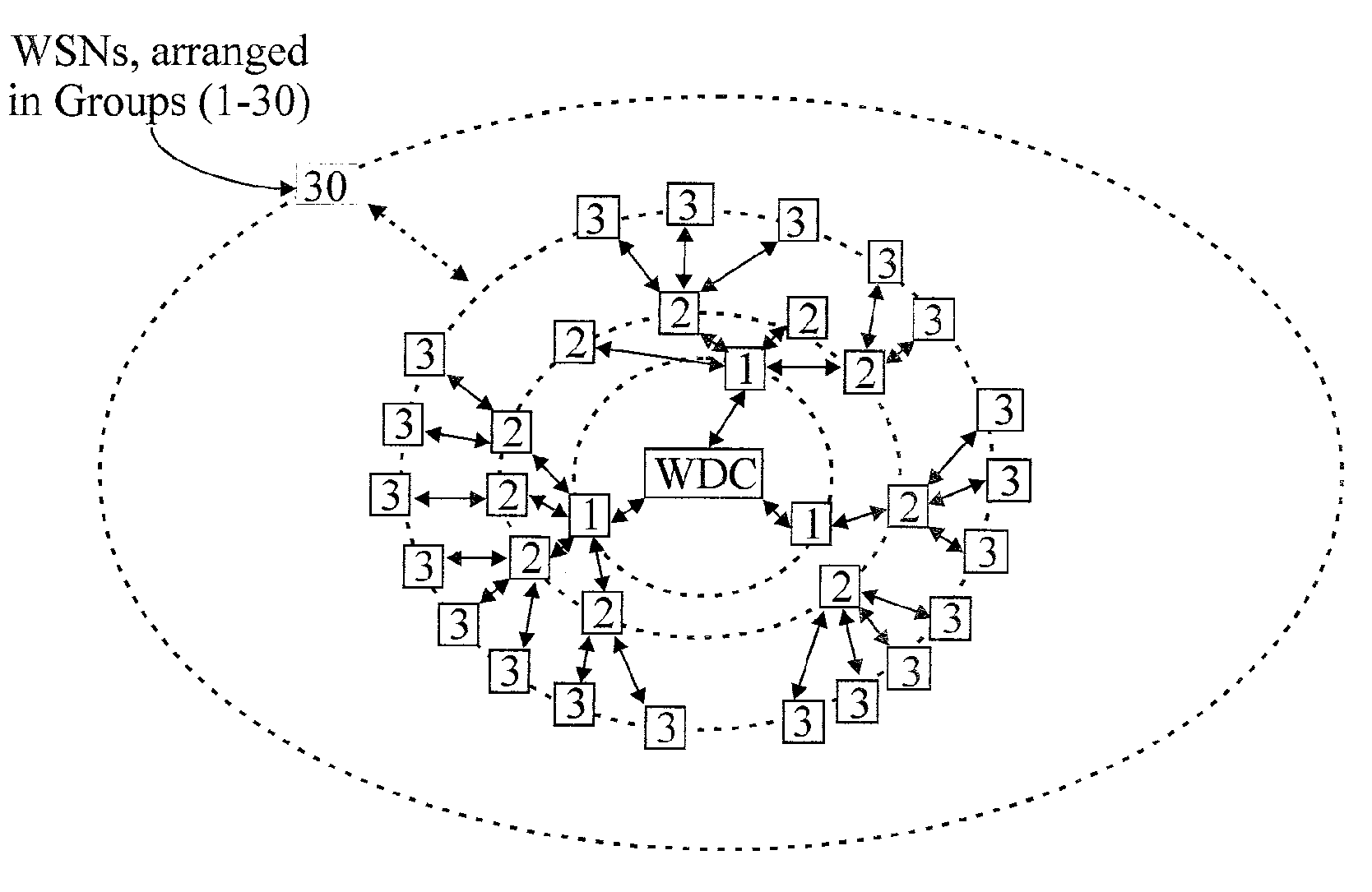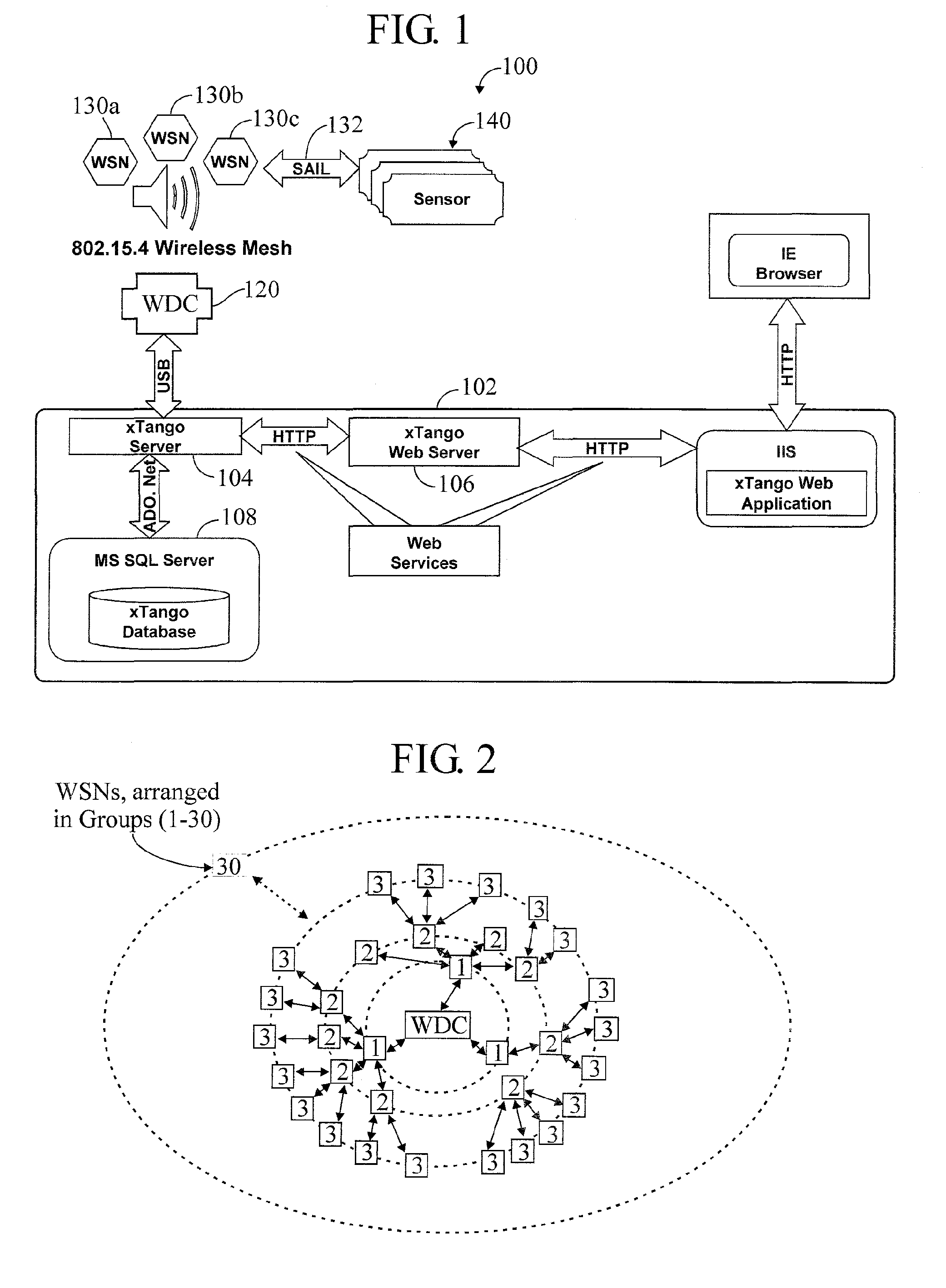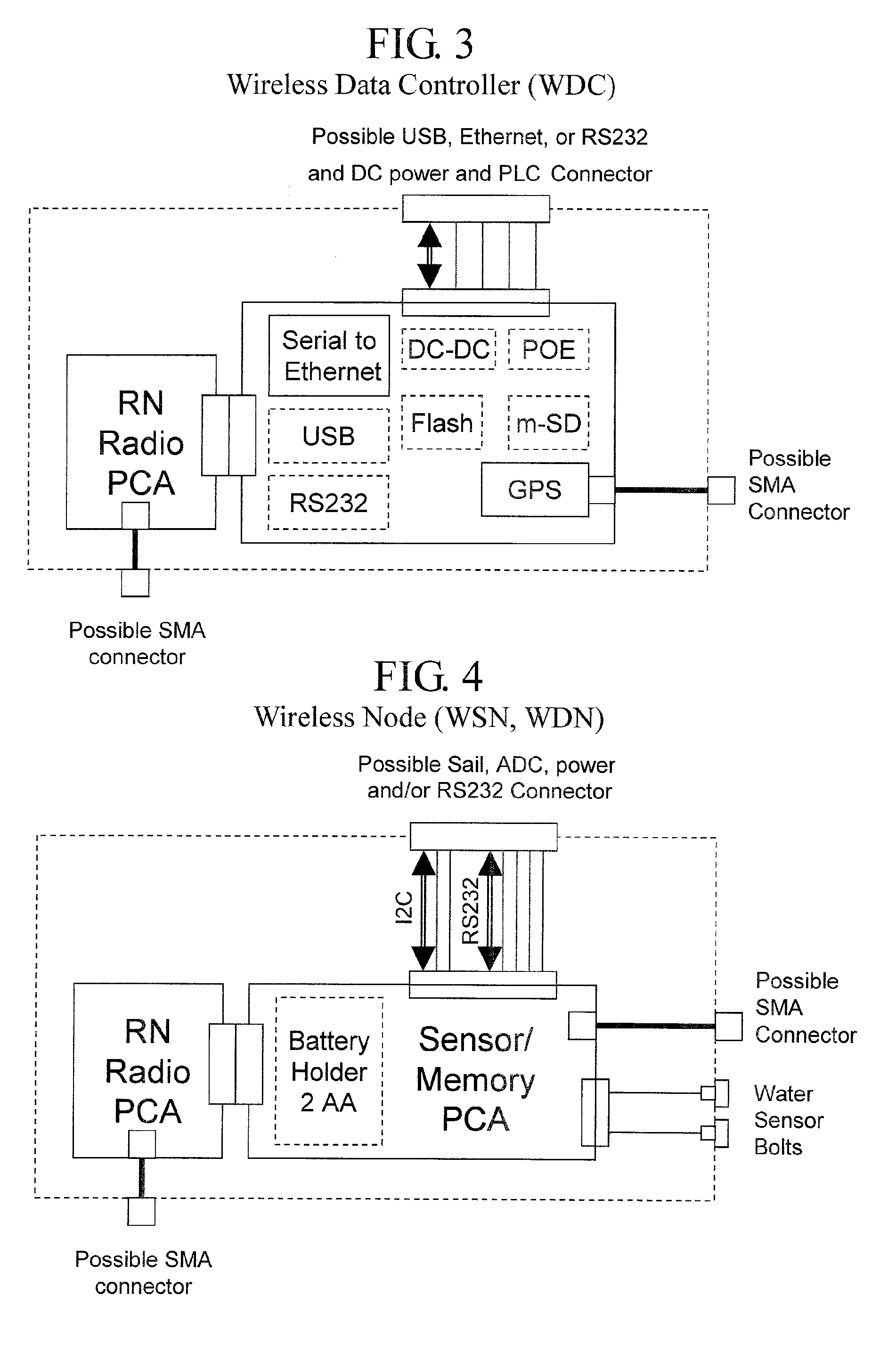Wireless Data Networking
a data network and wireless technology, applied in the field of data networks, can solve the problems of unable to communicate information across the network, ffd rendering, and bluetooth's protocol is more complex, and achieve the effect of low power and better read ra
- Summary
- Abstract
- Description
- Claims
- Application Information
AI Technical Summary
Benefits of technology
Problems solved by technology
Method used
Image
Examples
example)
Description (Example)
[0609]DP1, start up the radios for the ODD Group devices to listen.
[0610]In DP2, . . . EVEN Group devices have the next two DPs (DP2 and DP3) to transmit data, ODD devices are listening.
[0611]For some reason, a listen radio needs to stay up longer (into the next DP) so that it catches the whole message.
[0612]The EVEN groups transmit to the ODD groups during those 4 SPs (really, only during 2 of the 4, plus the 1 previous and 1 after “buffer” listening periods), then you switch around, and the ODD groups to transmit to the EVEN groups.
[0613]If you have a device 3 that wants to send, it has to go through 2, through 1, to 0. When 3-odd is sending, 2-even is listening, and data follows from 3 to 2. Then, 2 goes into transmit, when the odds are listening. 2 has an ack that it wants to send back to 3, and data that it wants to send to 1. so during that period, it can send that message (same message? All in one?) to both its parent and its child.
[0614]In the next data ...
example
[0679]This is an example of message transfer from a shock sensor (id “08012241”) connected to the SAIL bus that gets a shock event while the WDN (id “18442124”) is asleep.
[0680]The start message is sent by the shock sensor to wake up the WDN device. This message does not need to be sent unless the WDN is asleep (no start message or WDN sent stop message).
[0681]Sing is the WDN telling the SAIL bus that it is up and running and is ready to allocate I2C addresses. This message is sent to the general call address (address 0).
[0682]This message comes from the SAIL device telling the WDN that it would like an address on the SAIL bus. Sent to the address specified in the ‘sing’ command.
[0683]Soul is the addressing message sent from the WDN. Once this message is sent out to the device the WDN expects the device to answer messages on the I2C address specified in the “s” attribute and send messages to the WDC on the I2C address specified in the “a” address from the ‘sing’ command. This messag...
PUM
 Login to View More
Login to View More Abstract
Description
Claims
Application Information
 Login to View More
Login to View More - R&D
- Intellectual Property
- Life Sciences
- Materials
- Tech Scout
- Unparalleled Data Quality
- Higher Quality Content
- 60% Fewer Hallucinations
Browse by: Latest US Patents, China's latest patents, Technical Efficacy Thesaurus, Application Domain, Technology Topic, Popular Technical Reports.
© 2025 PatSnap. All rights reserved.Legal|Privacy policy|Modern Slavery Act Transparency Statement|Sitemap|About US| Contact US: help@patsnap.com



